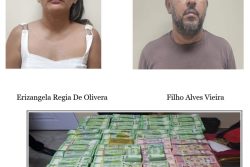A hydrological expert is doubtful that Government gave enough consideration to several studies and his own recommendations that there had to have been an additional stream of water to the Amaila site to make the proposed hydropower project viable in periods of the year that would see low water flows.
He also believes Government should be aiming for a basin rather than single-site development.
The now seemingly dead US$858 million 165-megawatt hydro project was proposed to be located on the Kuribrong River in West Central Guyana about 250 kilometres southwest of Georgetown.
Maurice Veecock, a senior lecturer, Department of Civil Engineering in the Faculty of Technology at the University of Guyana said that the Amaila Falls project would not work unless the flow of water is diverted from other sources and fed into the reservoir there. Veecock worked on hydro projects in the 1970 and 1980s and has institutional and technical knowledge about everything hydro in Guyana.
A number of other reports, including the June 2011 Halcrow Group Limited Hydrology Review and the Mercados Energeticos study, pointed out that the flow to the Amaila project site will diminish at certain times of the year and that steps must be taken to prepare for this eventuality.
According to Veecock, the drainage area for the Amaila project is 648 square kilometres. He said that analysing records over the past 45 years, average flows will be approximately 64.0m3 per second.
Asked what was the extent of the work done to ascertain whether Amaila had a large enough reservoir, Veecock said that the Hydro Electric Power Survey 1976 said that Amaila should be the first hydropower site to be built in Guyana. “We noted that it had a very small reservoir and we noted that the hydrological characteristics were of such that you have to get water from another basin. Therefore we had recommended in 1978 to build Amaila with a diversion from the Potaro River to supplement the low flow conditions,” he said.
He said that the survey that was done in 1976 said that water could be diverted from the Mazaruni. “The beauty of Amaila, is that Amaila has the highest head,” he said. He said that studies show that one can divert water from the Potaro to the Amaila reservoir.
“When you’re generating power there are two things that you require: head and flow. [Amaila] does not have the flow but we know where we can get the water from…the water can come from the Potaro River basin upstream at Kaieteur and with time we can divert water from the Chi Chi hydro power scheme and the water coming through the hydro power scheme will go into the Potaro River and then into the Amaila reservoir. We are looking at a basin development,” he said.
He said that in 1978, a team of officers in the Government met with the World Bank and the Inter-American Development Bank to discuss the financing of the Amaila Falls hydro. He said that after ten minutes of discussion, the decision was made to abandon plans for Amaila and focus instead on the Upper Mazaruni area.
Upper Mazaruni was eventually abandoned due to Venezuelan pressure against the project and other issues.
“I started something called Critical Power to build Tumatumari to 50 megawatts. But the World Bank said the country was not interested and therefore they could not finance it. We went all over the world, including Bulgaria, they hadn’t the money so we did not get it. The people said they will come back in 1991 to do a basin study,” he said. “The Japanese even jumped the gun and made a proposal in 1991,” he said, referring to a report done by the New Japan Engineering Consultants Inc.
He said too that in 1991, the World Bank came back to Guyana saying that they were interested in not just a site development but a basin development. “There are three major [areas]: Cuyuni, Mazaruni and Potaro. “You could forget the Cuyuni because 85 percent of the catchment area lies in Venezuela,” he said.
He said that with the change in Government in 1992, the Government was advised not to bother with the Upper Mazaruni project and concentrate instead on micro hydropower schemes. It is said that the international financial institutions did not buy this idea and walked away.
“We knew fully well that we don’t have sufficient storage in the Amaila reservoir. The hydrology of that basin is known by the Government all the time,” he said. “Guyana continues to make one mistake. When they want to have development of any engineering project, instead of putting engineers in charge they put economists,” he said. “The fact is that you cannot take an accountant or an economist to do development projects. Both Governments are making the same mistake…they are putting accountants and economists to an engineer’s job,” he said.
“I told [the Govern-ment] that for Amaila Falls you have to do two things: they have to ensure that they get water from the Potaro and they have to ensure that the [geological faults] that are in that area are properly investigated,” he said.
He said that if there is a fault resulting in low flow of water to the project then the Government of Guyana would have to be liable for that. “I also tell them that they must look for sinkholes. There may be crevices along the reservoir through which water will leak,” he said.
“The Potaro river basin development should be the first basin for hydro power development in Guyana,” he said. “Whether you start at Tumatumari or at Amaila [it matters not],” he said.
He said that Tumatumari is the last site that should be built in a river basin hydro power development. “There are two problems with Tumatumari…when the water is high, the power is less. The head decreases because the Essequibo River backs up and the water flows back into the Potaro so the head decreases,” he explained.
He said that following all of the formal studies done to assess hydro power potential in Guyana, the Hydrometeorological Department set out from 1965 on a series of studies looking at rainfall patterns. But he said that such data is no longer collected.
“After Forbes Burnham died, the National Service petered out. “We used to use the National Service to get access to the areas to collect basic data,” he said.
Ask whether the Amaila project in its latest iteration gave considerations to his recommendations, he said that he could not say since he was not privy to the discussions of the company and the Government.
“The Government knows about this. Ask Prime Minister Sam Hinds if I did not tell him these things years ago,” he said.








